
Spellbook Rush is 2-player couch coop game where two young witches as they try to escape their magical library. Dodge flames, avoid getting inked, and don’t run into that smoke as you brew potions and knock out the evil books in a fast-paced game where communication determines if you taste victory or suffer defeat!
Project Status
Complete, Not Shipped
Role
Game, Level & UI Designer, 3D Artist
Software
Unreal Engine, Illustrator, Maya
Spellbook Rush
Contribution
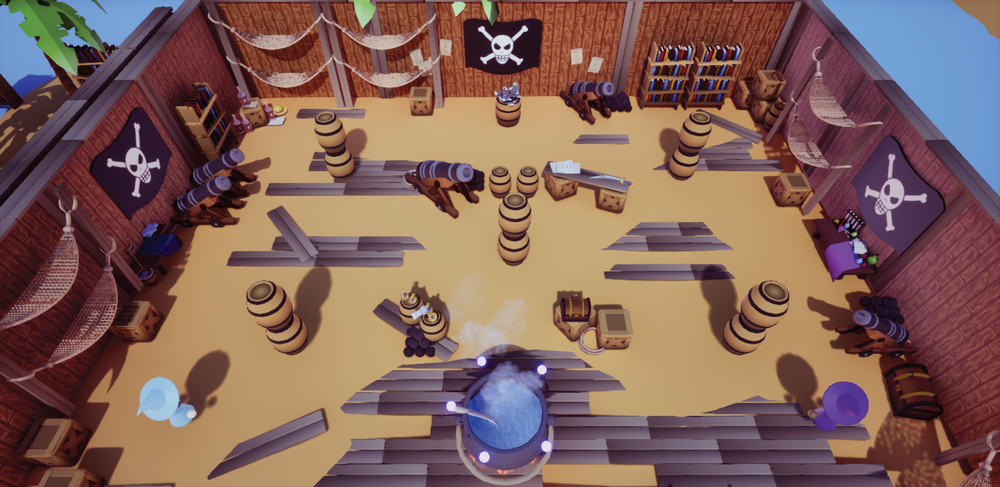
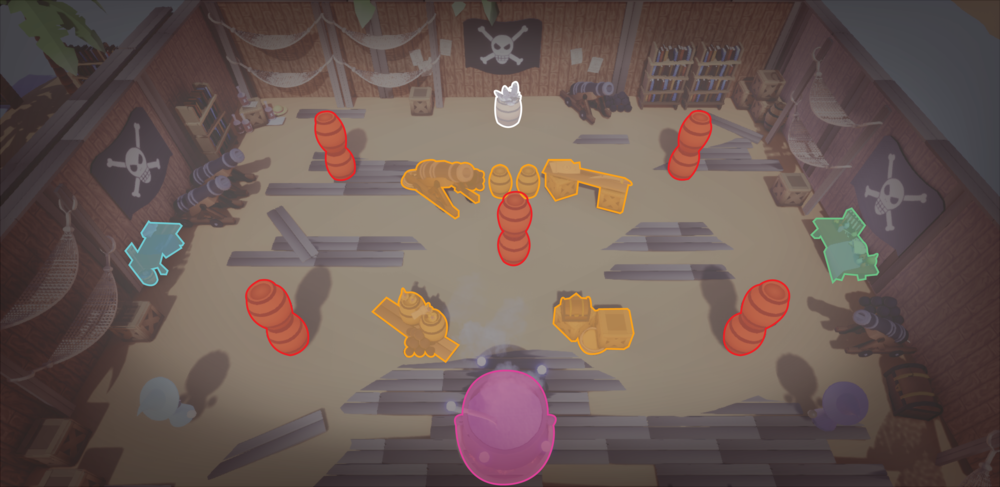
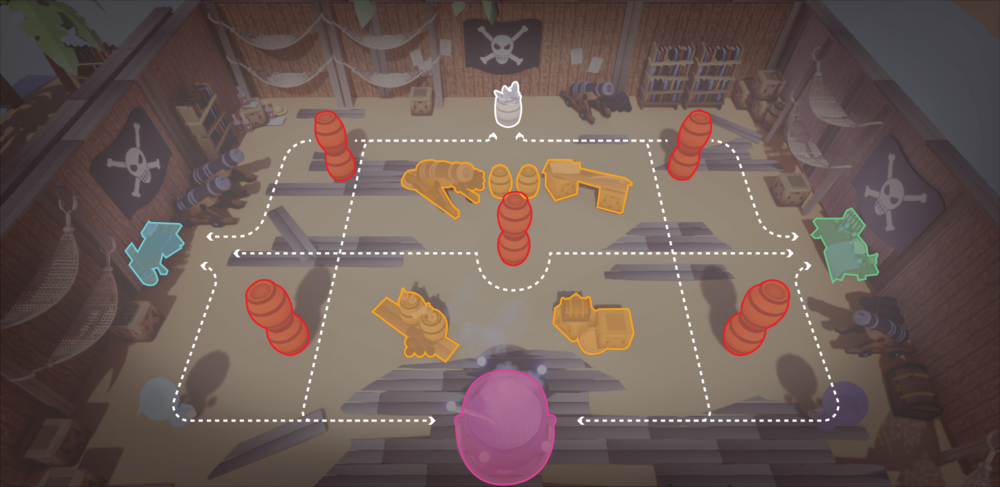
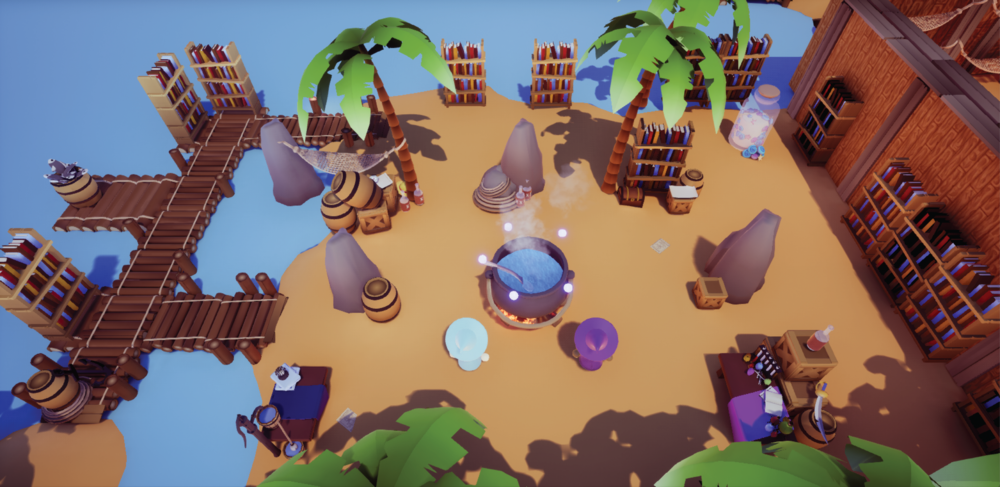
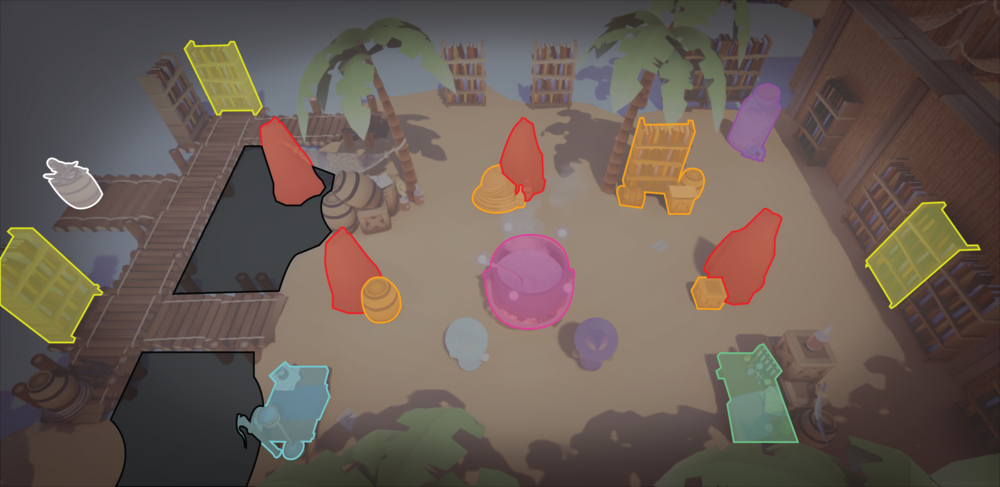
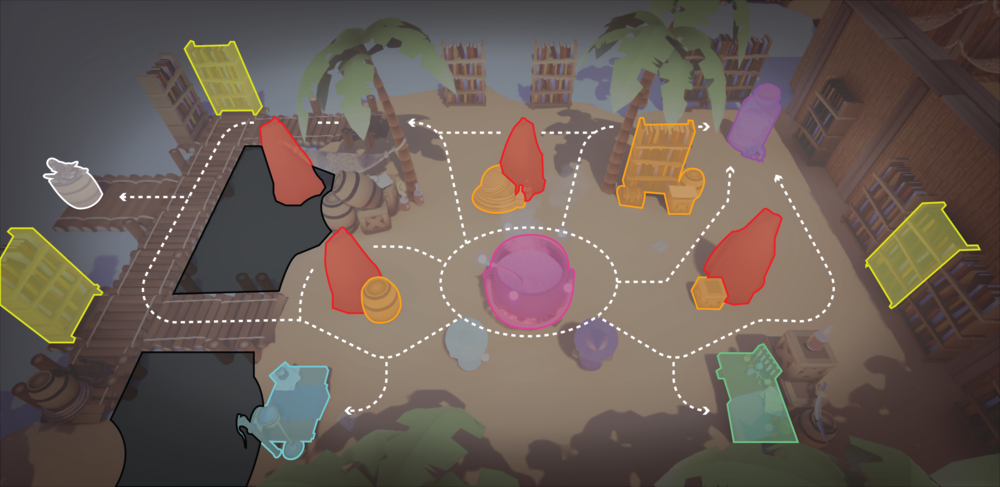
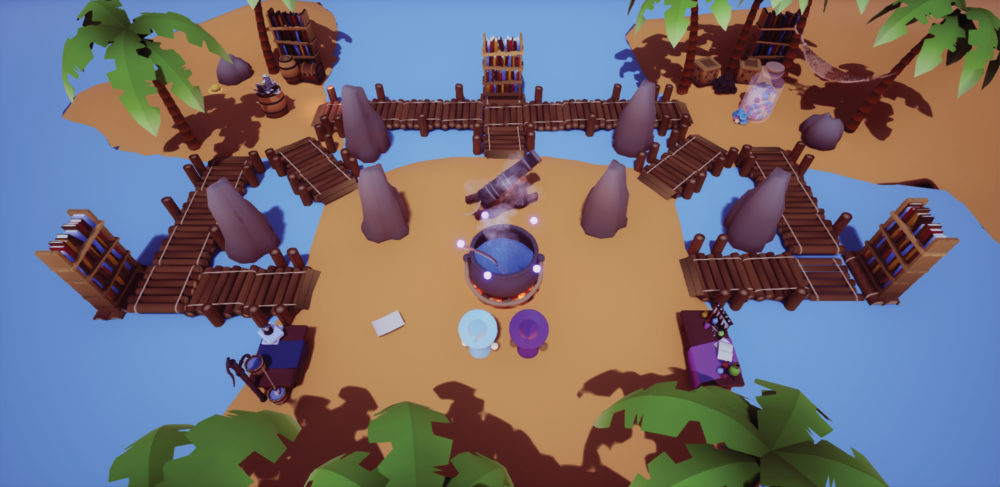
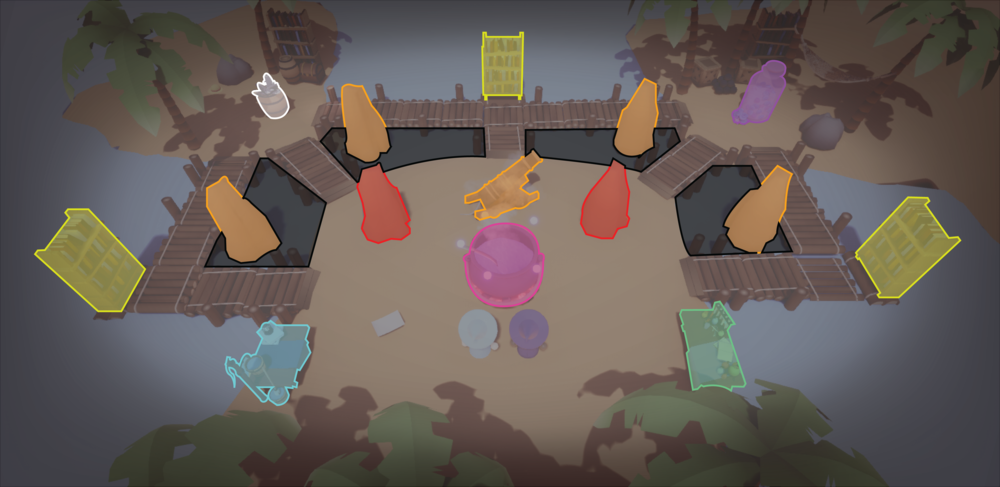
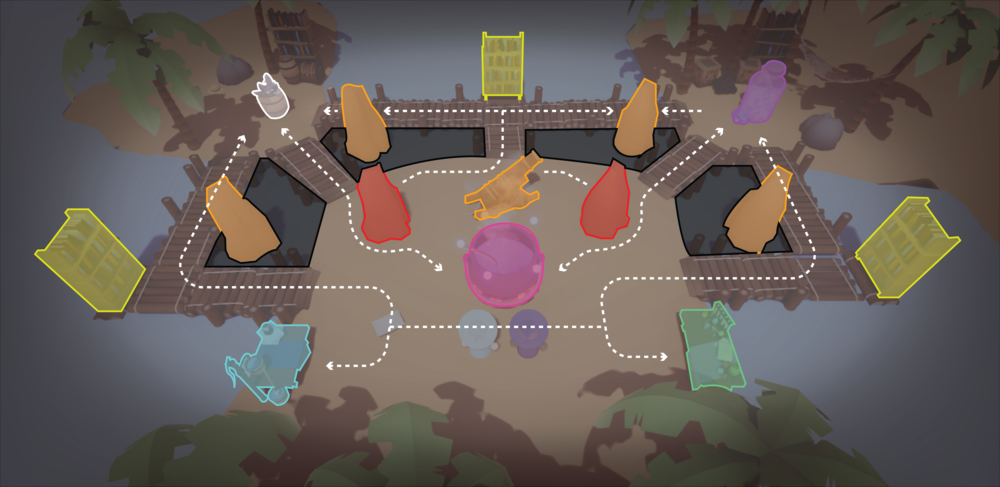
Pirate One
In Pirate One I introduce the Squid Spellbook. The Squid Book does not affect the players movement but it will passively obstruct their view. The introduction of the Squid Book is the easiest book to engage with in the Pirate Ward since the player can still move freely.
Pirate One is also symmetrical and contains plenty of space for the player to avoid the ink streams from the Squid Books. This passive affect and freedom of movement makes Pirate One ideal for onboarding the player to the mechanics of the Pirate Ward
Pirate Two
Pirate Two builds on the foundations of Pirate One with increasing difficulty. Pirate Two introduces the Bubble Book. Unlike the Squid Book, the Bubble Book will push players away in a linear path.
Pirate Two plays symmetrically but constricts the range of motion on the left side of the map. The tight spots have Bubble Books perched at the end in order to create choke points that would force the player to move more strategically around the play space.
Pirate Three
Pirate Three Increases the difficulty from Pirate Two by adding more choke points. With both Spellbooks introduced in the prior levels, players should be familiar with the mechanics and consequences of coming on contact with the Spellbooks.
The chokepoints in Pirate Three force players to navigate around the Spellbooks when the time is right. The movement on Pirate Three is more strategic gradually builds on the mechanics introduced in the previous two stages. Players have to fully cooperate in order to succeed.
Levels
User Interface
I created flow charts and early concepts of the menu and in-game UI. There are menu pages for play and settings which would allow the player to make adjustments to their experience such as audio tuning.
The game UI displays the number of Spellbooks remaining in the level and need to be defeated. The Magic Meter in the top left corner of the screen shows how close the player is to failure. The Magic Meter reflects the status of the game by changing colors and shaking more violently as the player nears failure
I was in a small team and contributed to Spellbook Rush by creating levels for the Pirate Ward and UI for the game/menus. I also created various shaders for the diegetic UI to make aspects of the game more readable.
Learning Outcomes
My responsibility for the Pirate Ward included designing the associated Spellbooks and tuning their difficulty as the player progressed between the three stages. I tested my maps at the end of every week and observed players pain points. I tuned the placement and impact of each Spellbook until I found a happy medium where players were succeeding more often than not while still being challenged by the pressure of the game.
This was also my first attempt at Unreal Engine’s UI, so I took advantage of that opportunity and decided to learn about render targets. While not the most optimized in this specific use case, render targets are what allowed me to display the Magic Meter that I modeled. The 3D Magic meter allowed me to create interesting dynamic materials that I could then display in the 2D heads-up display.



